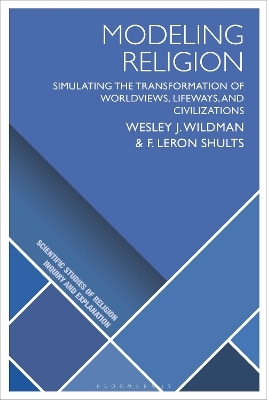
Modeling Religion
Bloomsbury Academic (Verlag)
978-1-350-36730-2 (ISBN)
The authors introduce a new branch of computational humanities, using computational modeling to simulate civilizational transformations. They integrate multiple theories across many disciplines, including the scientific study of religion, and evaluate the relative importance of those causal theories in processes of civilizational change. Materially, the book sheds new light on major debates among historians, archaeologists, and other social theorists on the role of religion within these major transitions.
The book tackles the urgent question of what sort of civilizational transformations might be possible in a world where the influence and significance of religion continues to decline wherever technology, education, freedom, and cultural pluralism are most advanced.
Wesley J. Wildman is Professor of Philosophy, Theology, and Ethics, and of Computing and Data Sciences at Boston University, USA; Professor II in the Institute for Global Development and Planning at the University of Agder, Norway; Executive Director of the Center for Mind and Culture in Boston; and Executive Director of Wildheart Evolution in Boston. F. LeRon Shults is Professor in the Institute for Global Development and Planning at the University of Agder, Norway and Research Professor at the NORCE Center for Modeling Social Systems in Kristiansand, Norway.
List of Figures
Preface
1. Why Model Religion?
2. Civilizational Transformation
3. Computational Simulation
4. Modeling the Neolithic Transition
5. Modeling the Axial Age Transition
6. Modeling the Modernity Transition
7. Insights and Prospects
Appendices
Bibliography
Index
| Erscheinungsdatum | 04.07.2024 |
|---|---|
| Reihe/Serie | Scientific Studies of Religion: Inquiry and Explanation |
| Zusatzinfo | 40 bw illus |
| Verlagsort | London |
| Sprache | englisch |
| Maße | 156 x 234 mm |
| Themenwelt | Geisteswissenschaften ► Religion / Theologie |
| Mathematik / Informatik ► Informatik ► Theorie / Studium | |
| ISBN-10 | 1-350-36730-3 / 1350367303 |
| ISBN-13 | 978-1-350-36730-2 / 9781350367302 |
| Zustand | Neuware |
| Haben Sie eine Frage zum Produkt? |
aus dem Bereich


